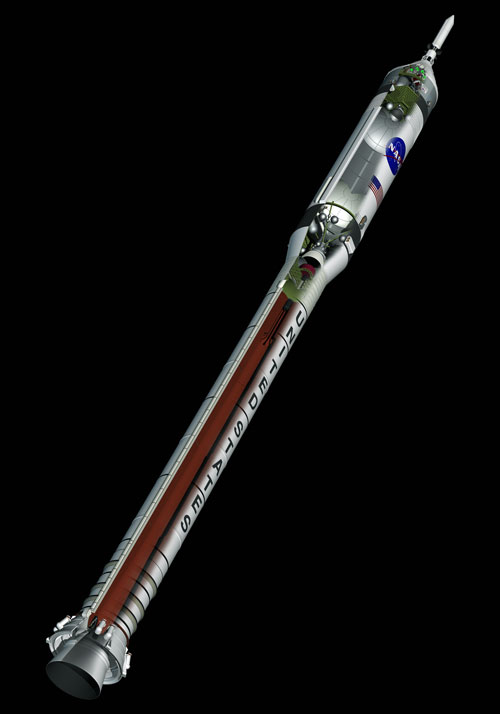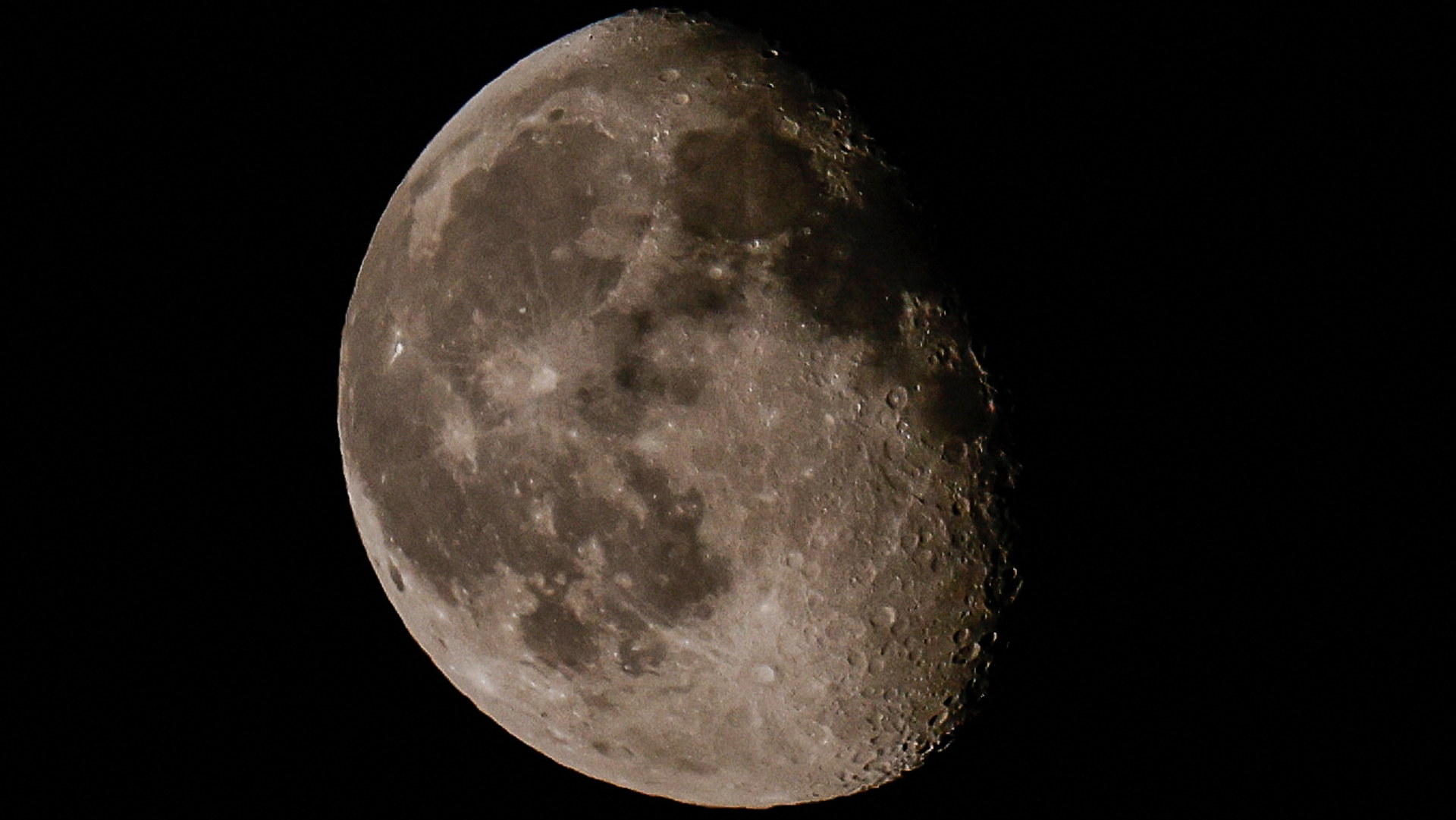NASA's Moon Vision: Action Plan or High-Tech Hallucination?

NASA'srollout of a strategy to return people to the Moon and eventually plantfootprints on the distant sands of Mars is sparking both praise and criticism.
MichaelGriffin, NASA's administrator, publicly unveiled yesterdaythe space agency's $104 billion mastermind of a mission that puts astronautsback on the moon by 2018, setting the stage for future expeditionary trips tothe red planet.
New spacetravel hardware - a CrewExploration Vehicle and the requisite boosters for tossing people and cargobeyond low Earth orbit - is part of the must-have agenda.
Butanalogous to one of Newton's laws of physics that drives rocketry -- but in a21st century context -- for every action plan there is always anequal but opposite reaction.
Lackspizzazz, budgetary timing
Editorialpundits, such as the New York Times, while saluting NASA's "Apollo onsteroids" approach, also noted: "Unfortunately, the new plan lacks the pizzazzto inspire public support and will be operating under budget constraints thatmake delays or overruns likely."
NASA's Moon, Mars andbeyond roadmap also prompted House Science Committee Chairman SherwoodBoehlert, a Republican from New York, to applaud the exploration architecture,while underscoring budgetary concerns.
Breaking space news, the latest updates on rocket launches, skywatching events and more!
Boehlert congratulatedNASA's chief, Michael Griffin and his team on the "very thorough work" theyhave done. "While we are still reviewing the details, it appears that NASA hascome up with an effective way to move forward, making the most of past U.S.investments in human space travel to enable us to enter the next phase ofexploration in the safest, least expensive and most efficient way."
That being said, Boehlertadded: "The question Congress and the Administration will still have to grapplewith most is not the nature or desirability of the exploration architecture,but rather its timing."
The lawmaker cited fundingshortfalls in the space shuttle program, explaining that there is simply "nocredible way" to accelerate the development of the shuttle follow-on - the CrewExploration Vehicle -- unless the NASA budget increases more than has beenanticipated.
"Whether such an increaseis a good idea in the context of overall federal spending at this time issomething neither Congress nor the Administration has yetdetermined."


Positive and negativefeatures
MarsSociety President, Robert Zubrin, assessed the new NASA plan, spottingsignificant positive and negative features.
"On thepositive side, it recognizes the need for the development of a true heavy-liftlaunch vehicle, and takes concrete steps the preserve the shuttle industrialinfrastructure necessary to produce such a vehicle," Zubrin told SPACE.com.The importance of doing so "cannot be overemphasized," he added.
Theheavy-lift booster is absolutely necessary to enable human exploration of theMoon and Mars,Zubrin said, with Griffin reversing his predecessor's "unworkable" spacearchitecture concepts.
Zubrin alsosaid there is negative aspect to the heavy-lift launch vehicle decision.
Whilepreserving the heavy-lifter infrastructure, the plan relegates its developmentto a subsequent administration. "In consequence, for the next 13 years, NASAwill continue to send crew after crew up and down to low Earth orbit, at a costof some $70 billion, for no justifiable purpose whatsoever."
In thepost-Columbia accident world, Griffin and others "have made the point that ifwe are to accept the costs and risks of human spaceflight, we should beundertaking missions that are worthy of those costs and risks," Zubrinexplained. "But for the next 13 years, we will continue not do so."
NASA isacting in accord with President George W. Bush's "Vision for SpaceExploration" as enunciated in January 2004, Zubrin said. "That policy,however, was formulated by a White House which lacked a competent NASAadministrator to advise it. Now that we have a qualified NASA administrator,this policy needs to be revisited and reformulated," he concluded.
Reasonable,pending detailed definition
NASA's ambition tohurl astronauts back to the Moon prompted thoughts from one person that canalready claim "been there, done that" bragging rights - Apollo 17 astronautHarrison Schmitt, a geologist and former U.S. Senator from New Mexico.
"I have great respect for President Bush's Moon-Mars initiative and forAdministrator Michael Griffin and his maturing management and engineering teamin NASA," Schmitt told SPACE.com. "The broad architecture wouldappear to be reasonable, pending detailed definition of the major technical andbudgetary issues," he said.
In an alternative universe, Schmitt added, the country wouldhave maintained the Saturn V booster capability - the huge rocket used topropel crews to the Moon -- rather than being forced to work with the spaceshuttle booster technology. "That, however, does not appear to be a viableoption for NASA at this time."
Critical path caution
In taking a preliminary look at the NASA architecture, thegeologist in Schmitt provoked a worry.
"One caution at this point is to not put the presenceof ice at the lunar poles in the critical path to success for thearchitecture," Schmitt said. "It is not a proven resource in spite of reportsto the contrary. On the other hand, elemental hydrogen implanted by the solarwind -- in contrast to water-ice that has come from cometary impacts -- isclearly concentrated in the polar regions over that present in lowerlatitudes," he said.
Schmitt said, however, that there is enough hydrogeneverywhere on the Moon to produce water and oxygen. "Thus, selection of a sitefor semi-permanent lunar base should be approached with an open mind until weknow for sure that ice is present and economically accessible at the poles."
In hisforthcoming book, Return to the Moon: Exploration, Enterprise, and Energy inthe Human Settlement of Space, published by Praxis-Springer, Schmittspotlights the role of the Moon in supporting an energy-hungry Earth. Thatprospect appears to be a missing-in-action aspect within NASA's new architecture,Schmitt said.
"Anotherconsideration for site selection not yet apparent in the architecture isverification of regional concentrations of helium-3,a potentially highly valuable, commercial energy resource for use interrestrial fusion power plants," Schmitt pointed out.
Schmittalso argued that the long-term architecture related to flights to Mars "musteventually contain a full, scientifically credible understanding of the longterm effects of the space environment on human performance and health."
No Apollo replay
PaulSpudis, a lunar and planetary scientist at the Applied Physics Laboratory, aresearch and development arm of the Johns Hopkins University in Laurel,Maryland, takes issue with those that see the NASA vision as an Apollo replay.
There issignificant difference in Apollo of yesteryear judged against the NASA plan oftoday, Spudis said.
In thefirst place, the systems making up the vehicles are being designed for maximumleverage: long-life, cryogenic-based propulsion, potential reuse in space,Spudis explained.
Secondly,the mission is different.
"In Apollo,the mission was to prove we could land on the Moon and return safely to Earth.In this case, the mission is to determine the best site to collect and use theresources of the Moon and to emplace the necessary infrastructure to do so,"Spudis said. "Admittedly, the early missions will be very much like a'super-Apollo.' However, they have potential to grow into something verydifferent."
Use ofoff-planet resources
In point offact, Spudis continued, "Apollo, for all its beauty, was essentially atechnical dead-end...one-use systems, storable propellants, a paradigm oflaunching everything from Earth."
Spudis toldSPACE.com that this system, as blueprinted by NASA, is designed from thebeginning to adapt to a different paradigm: The use of off-planet resources --lunar manufactured propellants- to create a permanent transportation infrastructure in cislunar space, theterritory between Earth and the orbit of the Moon.
Should some things have been done differently?
"Possibly",Spudis suggested. "You can never satisfy everybody by making architecturalchoices. However, it's a system that will get us back to the Moon with theminimal possible extra investment."
"It's astart back on the road to real space capability," Spudis advised. "And it'sbetter than the alternative, which is extinction of human exploration."
- NASA's New Moon Plans: 'Apollo on Steroids'
- Moon-to-Mars Plans Emerge: New Agenda or Apollo Retread?
- FAQ: Bush's New Space Vision

Leonard David is an award-winning space journalist who has been reporting on space activities for more than 50 years. Currently writing as Space.com's Space Insider Columnist among his other projects, Leonard has authored numerous books on space exploration, Mars missions and more, with his latest being "Moon Rush: The New Space Race" published in 2019 by National Geographic. He also wrote "Mars: Our Future on the Red Planet" released in 2016 by National Geographic. Leonard has served as a correspondent for SpaceNews, Scientific American and Aerospace America for the AIAA. He has received many awards, including the first Ordway Award for Sustained Excellence in Spaceflight History in 2015 at the AAS Wernher von Braun Memorial Symposium. You can find out Leonard's latest project at his website and on Twitter.
